“Tourist Fixed Net Fishing Monitoring” is an exciting nature experience for both children and adults! Board a fisherman's boat and head to the Kumano sea
掲載日:2021.03.30
KumanoCity located in the southern part of Mie Prefecture, welcomes visitors with its magnificent nature. Preparations are underway for a new tourism service that will allow you to experience Kumano more deeply, which is full of attractions such as the Kumano Kodo, a world heritage site, and Onigajo, a national scenic spot and natural monument. This time, we would like to introduce you to the great nature of Kumano, as well as the work of the families and cool fishermen who participated in the trial tour of the ``Kumano Sea Tourist Fixed Net Fishing Monitoring (tentative)'' tour.
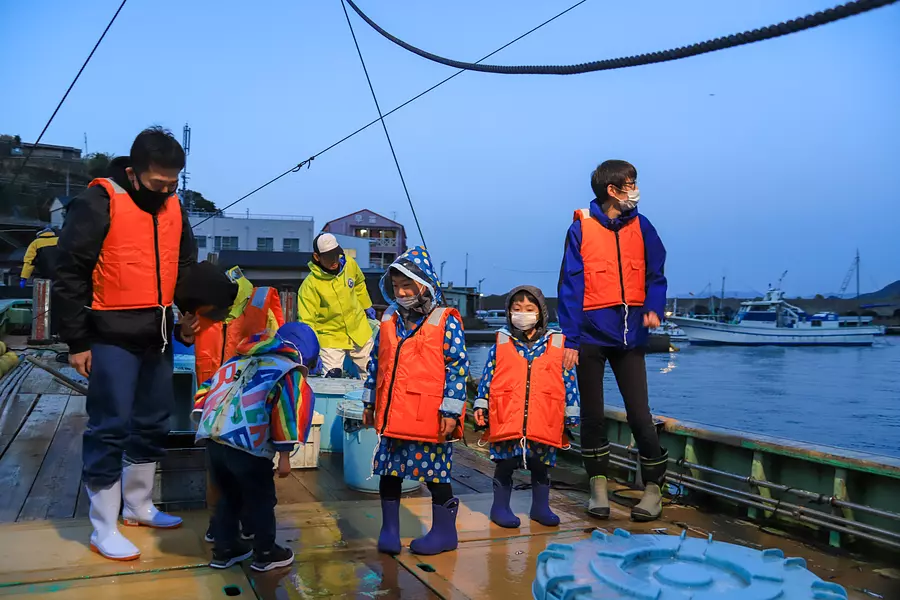
The fisherman's morning is early. Everyone gathers at the Isozaki Fish Market before dawn!
Two groups of parents and children gathered at Isozaki Fishing Port to experience the ``Kumano Sea Tourist Fixed Net Fishing Monitoring'' (tentative).
At 5:30 a.m., while it was still dark, the fishermen dashed out of the boat to the sound of a roaring engine.
After returning from the first fishing trip, the fishermen quickly begin unloading fresh fish.
The children looked at the busy fishermen at work and asked with worried expressions, ``Dad, are you going to get on that boat?'' Still, I could feel a little excitement.
Wearing life jackets, we are ready to board the boat.
Now that it's getting a little brighter, it's time to set sail for the Kumano Sea.
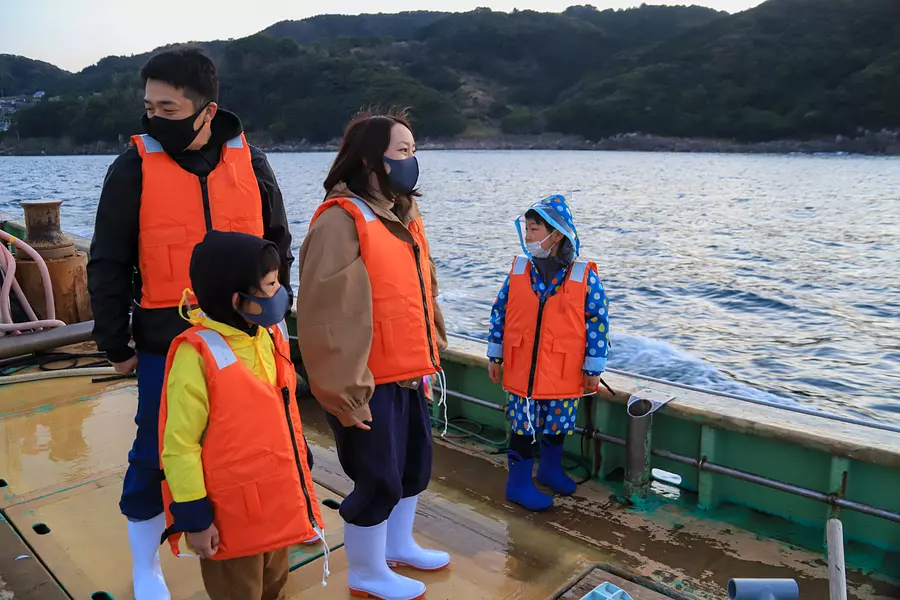
The set net fishing boat we boarded was very flat and the footing was stable. Also, since the boat moves relatively slowly, you will hardly feel any shaking.
Without holding onto anything, the children strolled inside the ship as it headed out into the ocean. ``What's in here?'' ``This place is empty.'' He was seen having a fun conversation with a fisherman.
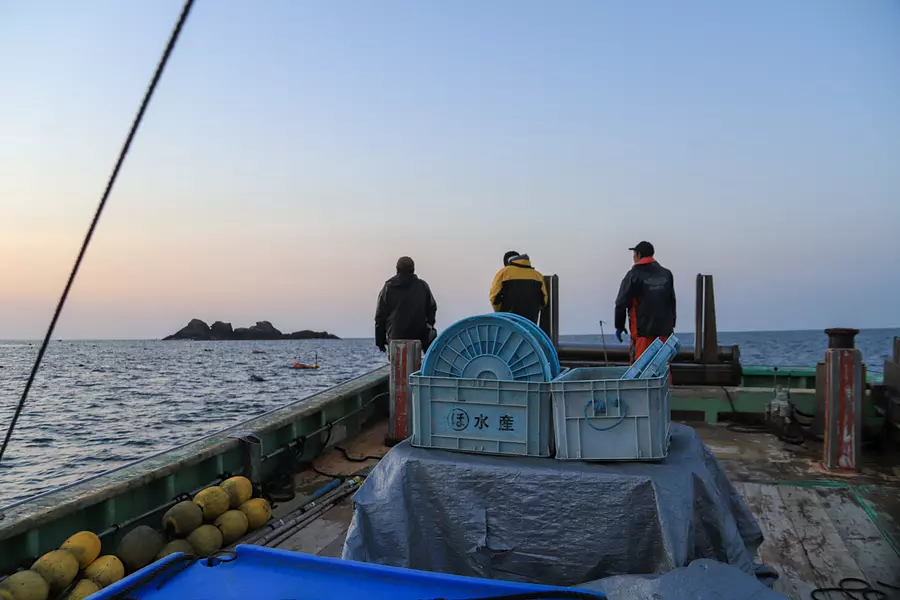
Mamigashima is an uninhabited island floating approximately 1.5km off the coast of Onigajo.
There is a legend about Mami-ga-shima that says that during the Nara period to the Heian period, Shogun Sakanoue Tamuramaro subjugated the demons (pirates) of Onigajo jo with a bow and arrow given to him by a child who appeared on Mami-ga-shima and danced and sang. It is said.
With Mamigashima in sight, the fishermen gradually slowed down the boat's engine and began fishing with set nets.
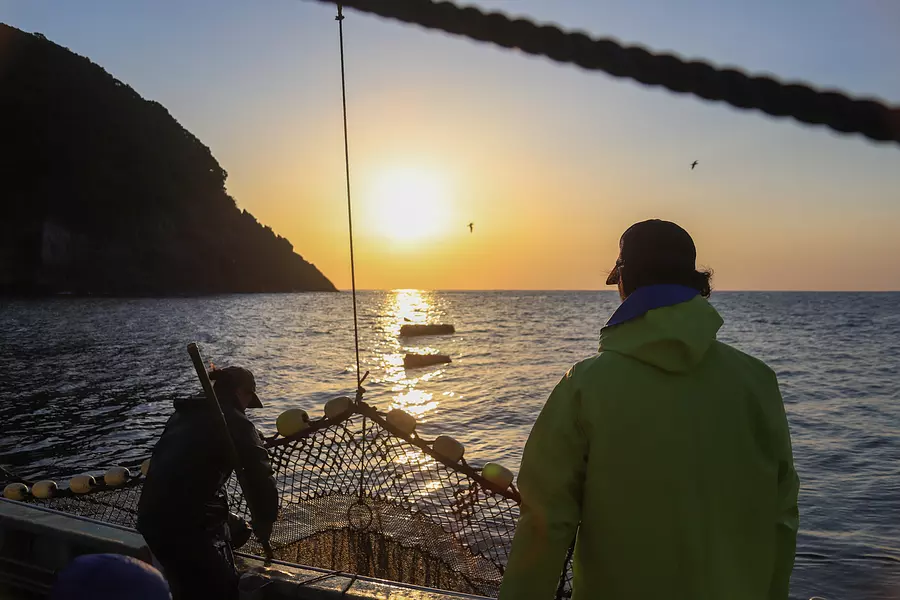
Set net fishing uses multiple layers of nets to catch fish.
We use the fish's habits to guide them using fence nets, kakoi ami, nobori ami, and finally box nets. Periodically pull up the box mesh part.
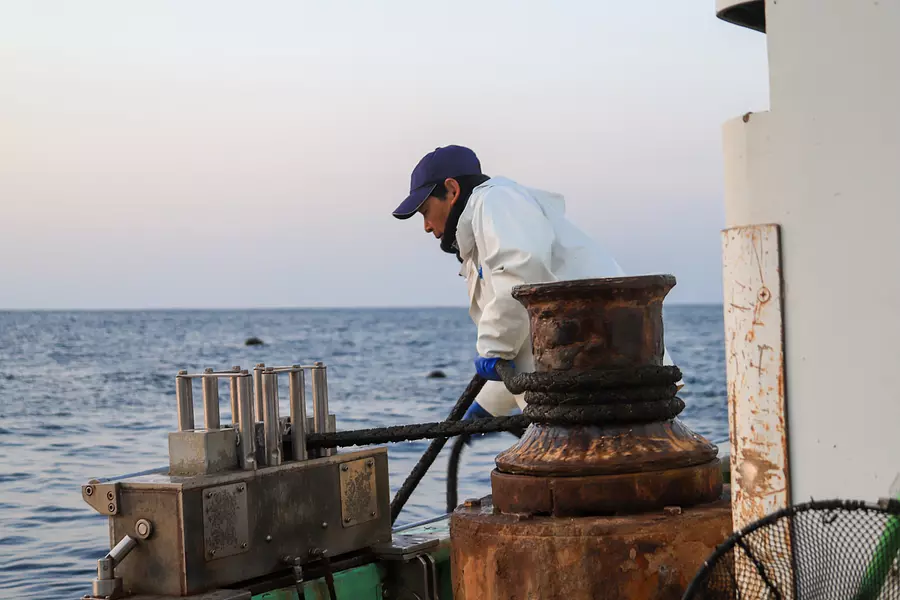
The rope of the box net is mechanically wound at both ends to pull the fish closer together, and the boat moves sideways so slowly that you won't even notice it, driving the fish from one end to the other.
The voices of the cooperating fishermen echo on board the boat, and the nets they have pulled in are returned to the sea. The net will continue to be set up in front of Mavrika unless it is dirty, undergoing repairs, or during abnormal weather such as typhoons.
Set-net fishing is also known as an environmentally friendly fishing method that takes into account the size of the mesh and the fact that it does not catch too many fish.
It is also recommended that you study how fixed nets work beforehand before visiting.
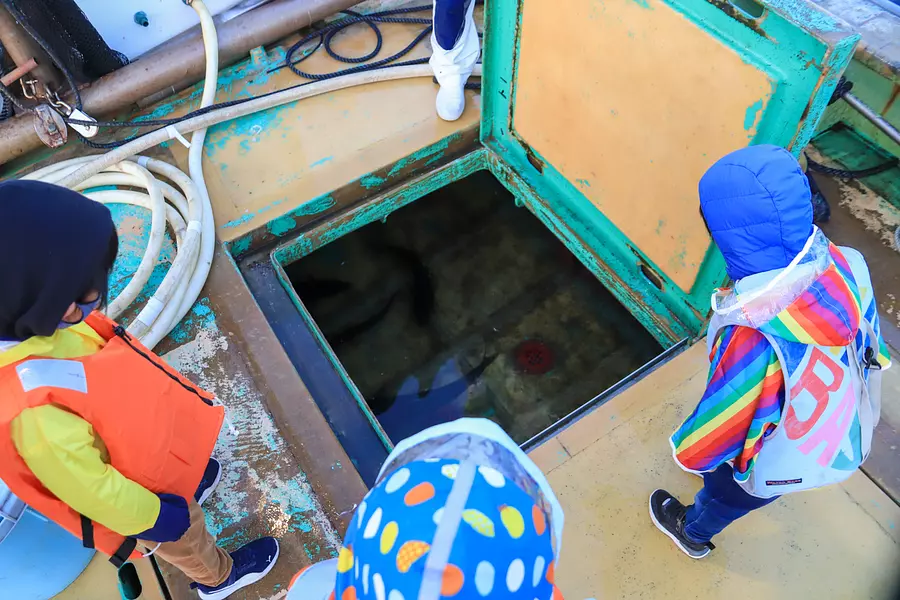
While we were slowly pulling in both ends of the box net to drive in the fish, the fisherman's brother popped open the lid of the boat's fish tank and showed us what was inside.
"There's a big fish!" the children peered in with great interest.
Then, the fisherman's older brother asked a quiz, "What is this fish?"
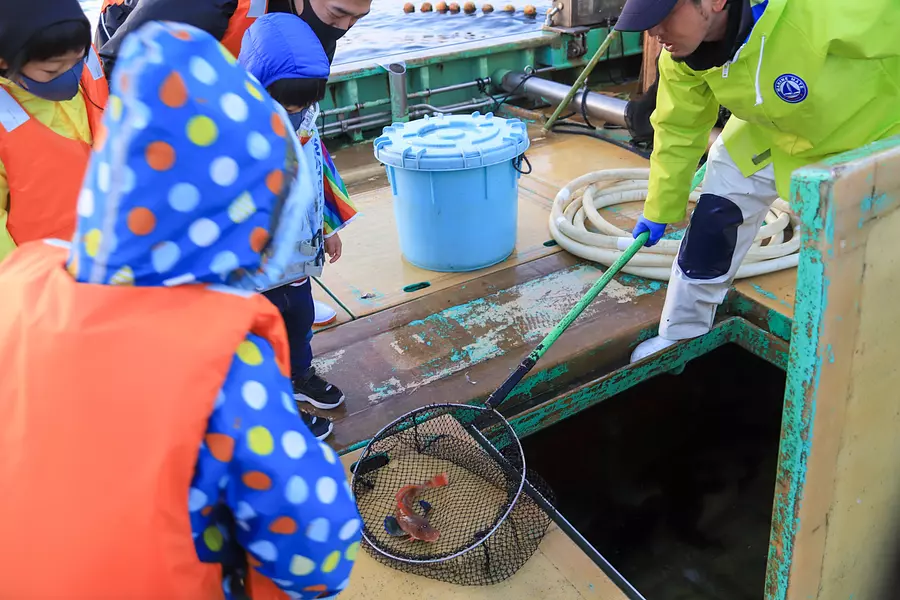
Would you like to touch it? The children gingerly poke at the fish with their fingers when the older brother tells them that it's not scary.
I smiled knowing it was okay.
- "This is a Suzuki, it's dangerous because it's sharp and you could cut your hand."
- "This is a filefish. This fish has no scales."
A fisherman brother explains each fish carefully.
"shrimp!"
- “Shrimp, what a shrimp.”
“Big shrimp!”
- "Is it a huge shrimp? This is a spiny shrimp."
The children's happy laughter echoed throughout the boat as they looked at the lively and lively fish, which you don't usually get to see up close.
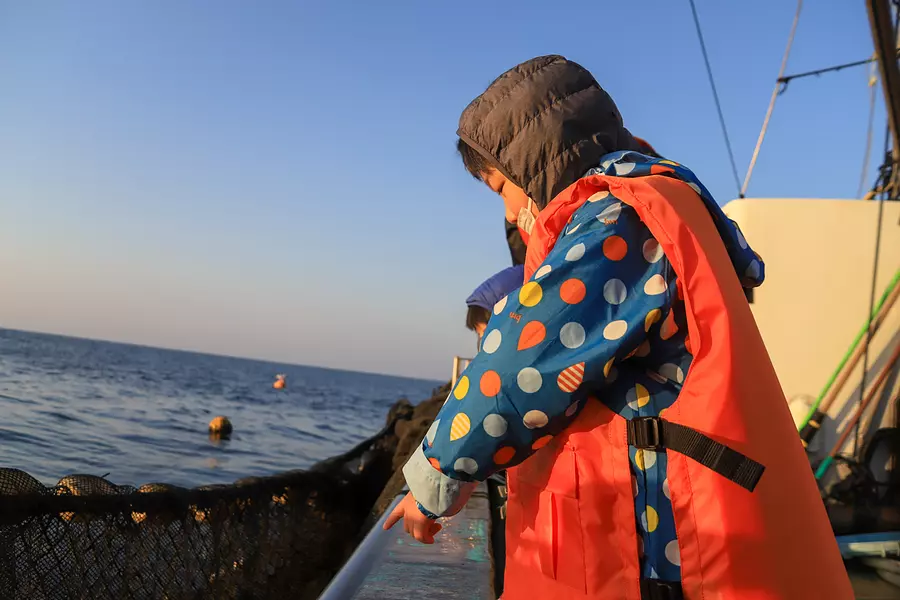
When you reach the end of the process of driving the fish to the edge of the net, you can clearly see the school of fish with the naked eye.
- "The ones swimming around leisurely are anchovies. The ones shining in the middle are mackerel (baby mackerel)."
Fishermen who work at sea are able to tell the type of fish just by looking at its movements.
“There are so many!”
The cheerful voices of children echo throughout the ship.
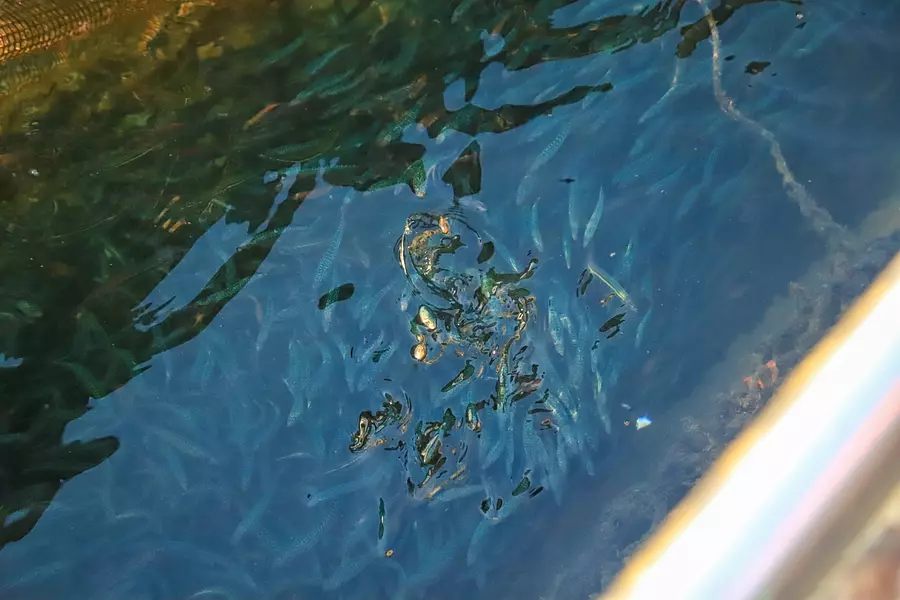
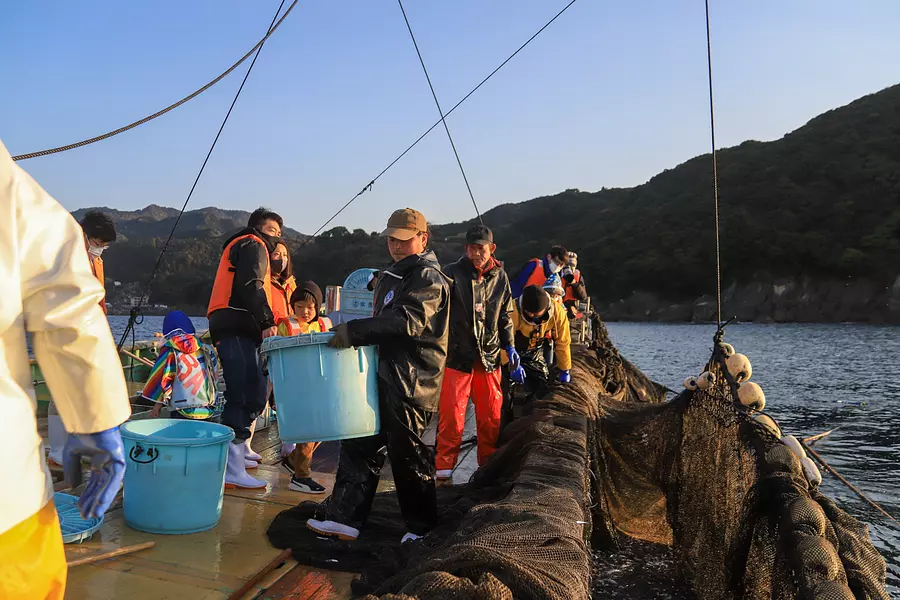
"Squid! Shrimp too!"
"Dad, come here. There's a squid!"
For some reason, squid is very popular with children.
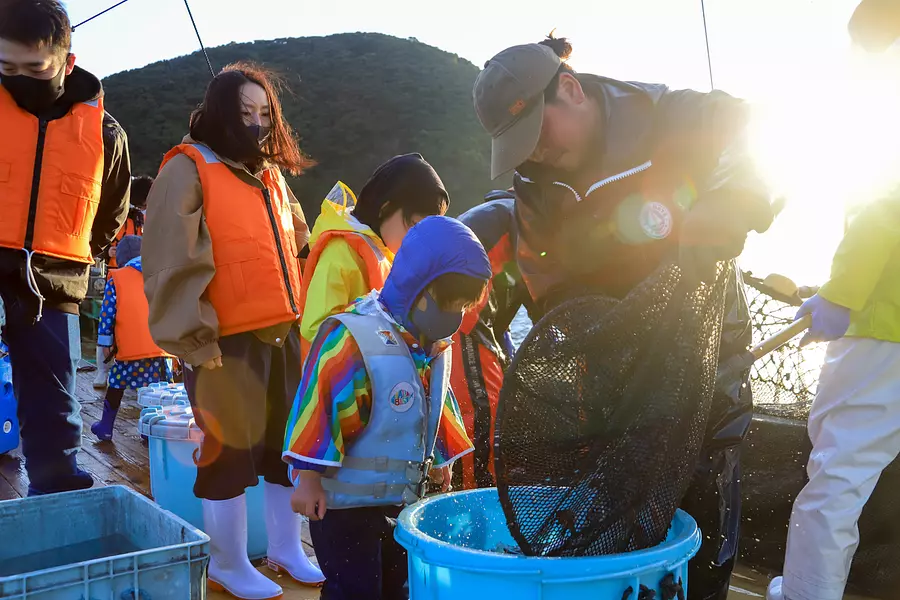
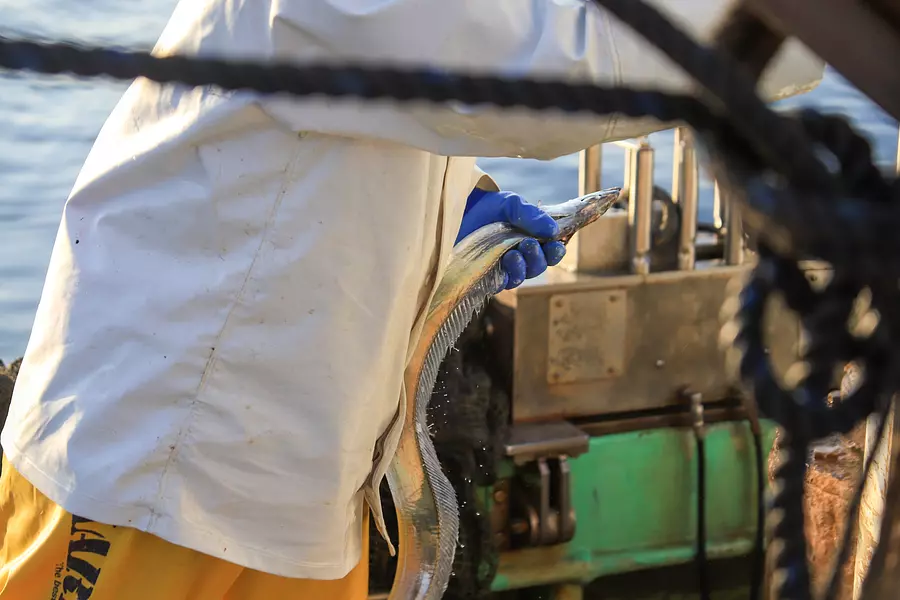
Splashing water is a sign of a lively fish.
The live fish (live fish) are taken to the fish tank for the "What is this fish? Quiz" question.
You'll be amazed to see the fishermen working so efficiently at their stations, scooping up fish with tinfoil nets and determining the species and size of the fish.
Contrary to the worries of parents who are worried that their children will disturb the fishermen's work, the fishermen watch over their children's special time surrounded by fish. I did.
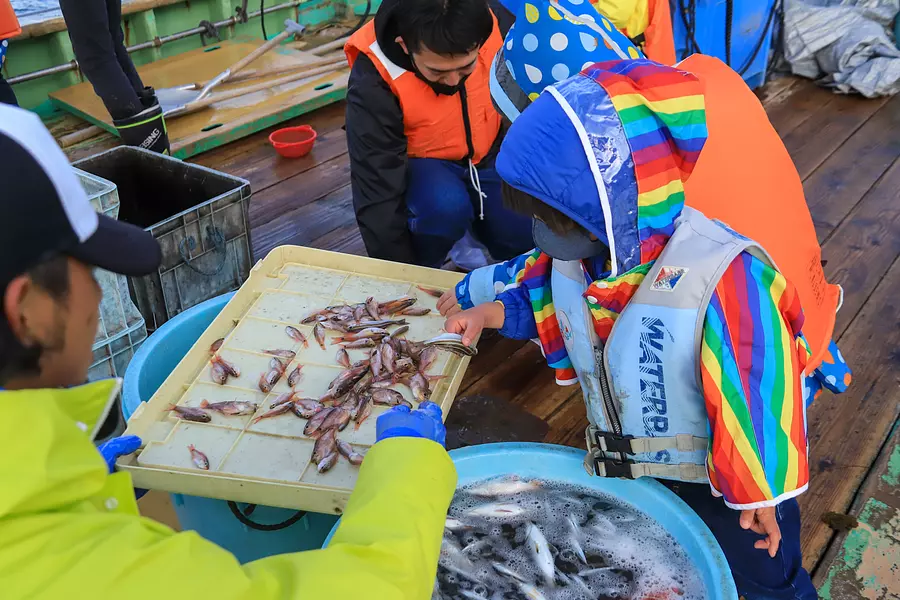
When I was loading the fish from fixed net fishing onto the boat, I suddenly looked around and saw a lot of birds flying around. The boat slowly begins to turn to return to Isozaki fishing port. Then, the fisherman started collecting small red fish on a plastic lid.
- "Let's give this red fish to the birds."
Even children who didn't touch the fish when they got on the boat started to do so before they knew it, probably because they witnessed the work of the fishermen up close.
The children grabbed small fish with their little hands and threw them into the sea.
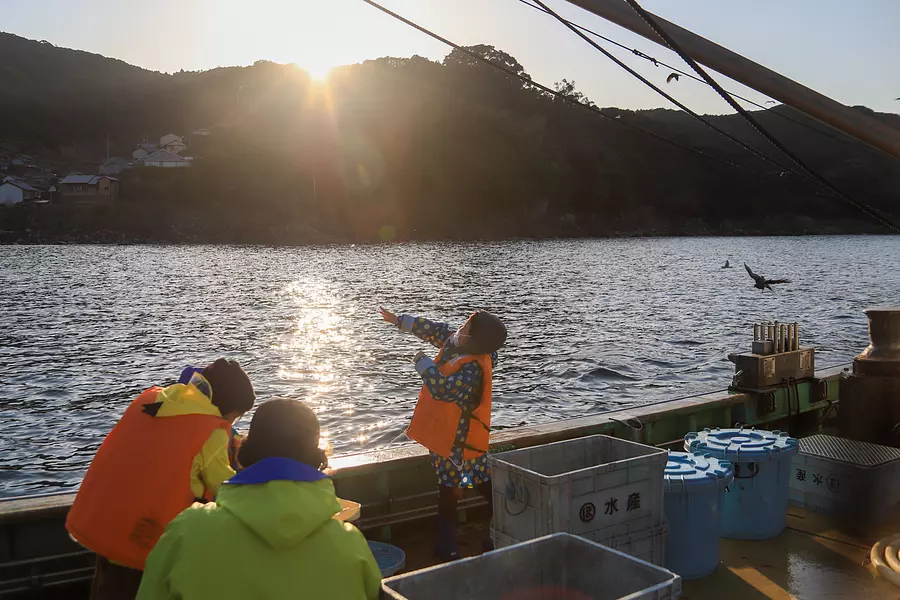
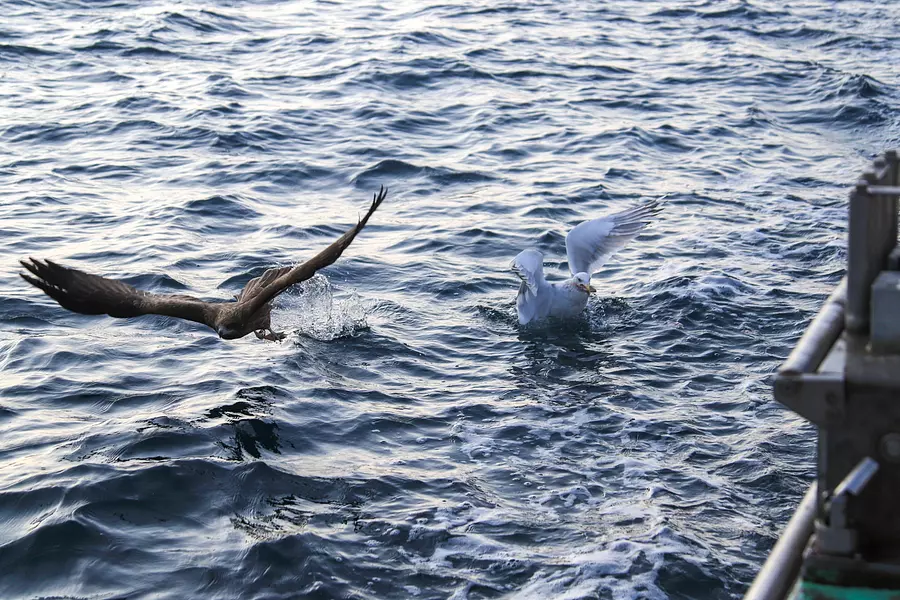
You can see up close how the black kite grabs a small fish with its feet, and the black-tailed black-tailed cat catches it with its mouth. The sight of birds flying slowly towards the Isozaki fishing port with the sun on their backs looks like a parade at a theme park.
Once the birds have had their fill, it's their turn.
Once you arrive at the port, the long-awaited ``Fisherman's Breakfast'' will be waiting for you.
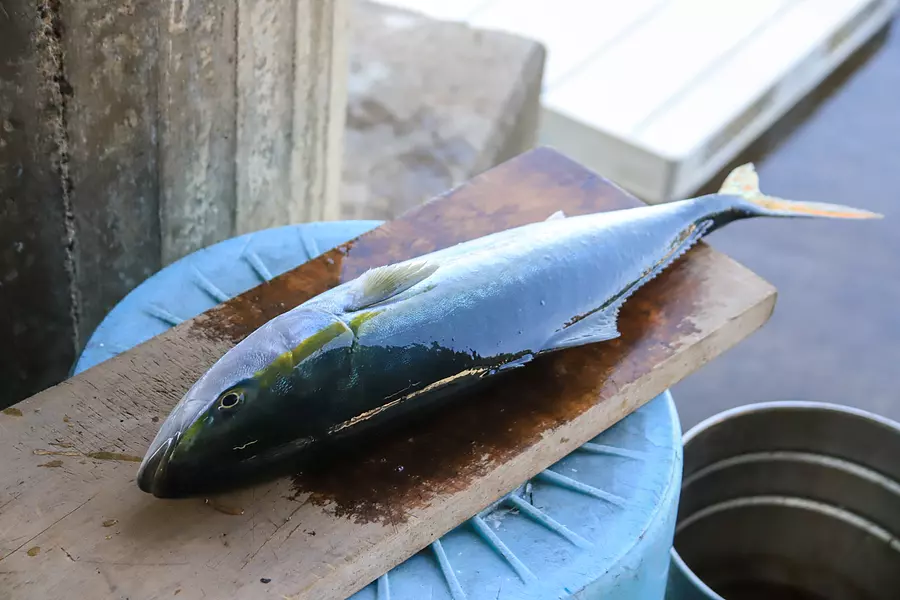
As soon as the fishermen arrive at Isozaki Fishing Port, they begin preparing to transport the landed fish to the market.
Live fish are transferred from the boat to a fish tank on land and placed on a scale to be weighed. Fish such as horse mackerel and mackerel are sorted at incredible speed by instantly determining the type and size of the fish.
Once the fish has been weighed and sorted, it is loaded onto a truck and transported to Yugi Fishing Port, which is approximately 16 minutes by car from Isozaki Fishing Port, where bidding will take place.
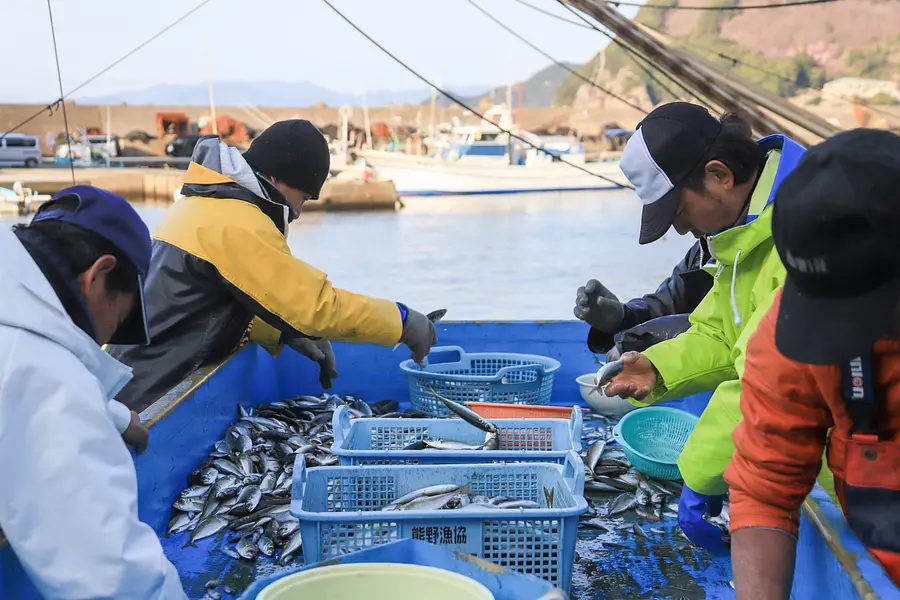
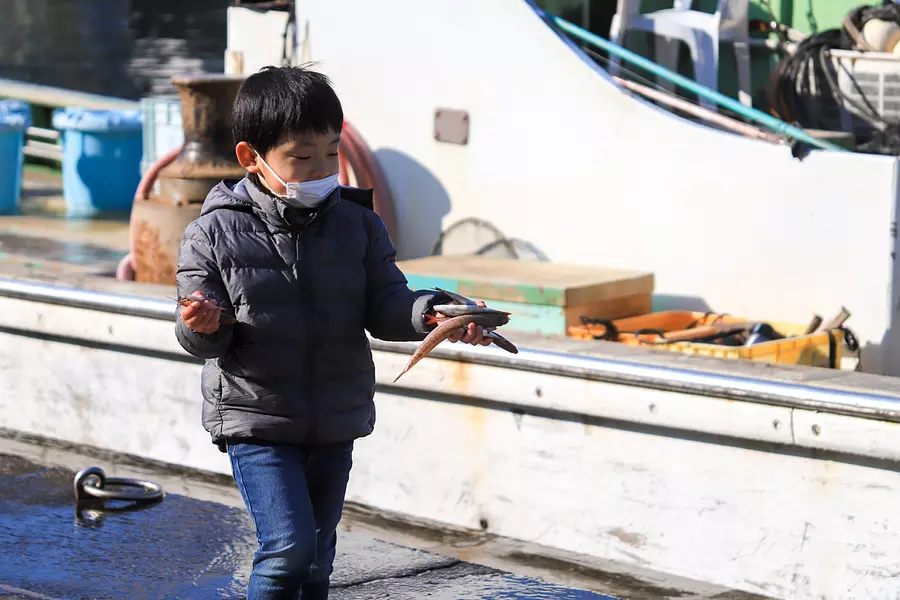
I don't hesitate to grab the fish, as if I hadn't touched it a few hours ago.
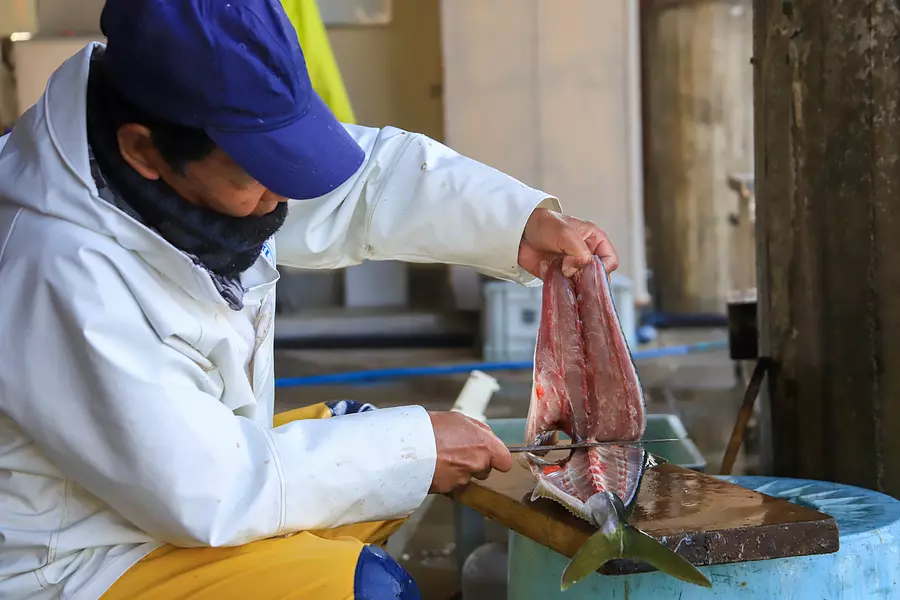
First of all, the fishermen will cut out the plump and splendid warasa (the name given to the fish before they turn into yellowtail).
- "The skin of walrus is hard, and it's difficult to cut into it."
As you admire the fishermen's knife skills, the warasa begins to look like soft tofu.
He carefully taught me the important points, such as cutting with brute force where there are thick bones.
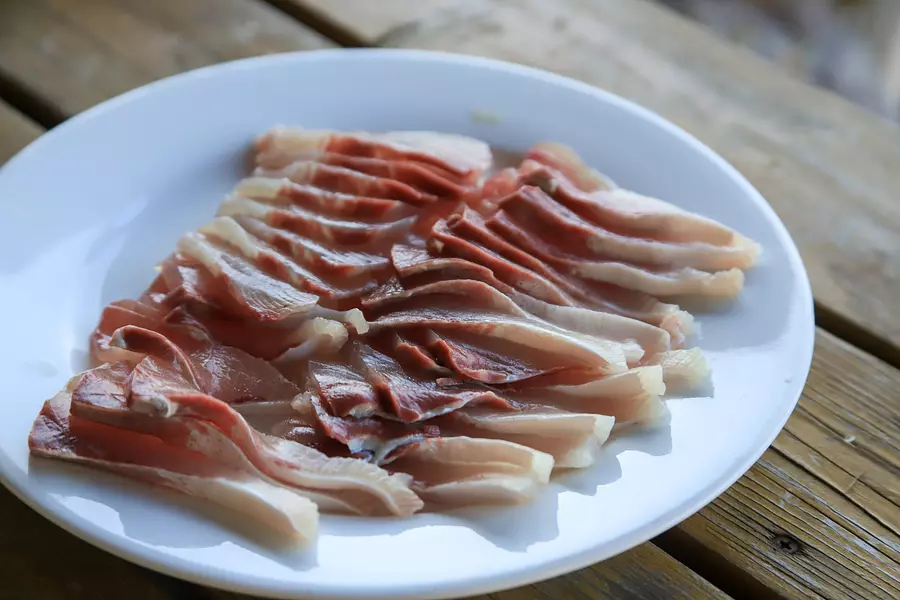
Next to warasa is horse mackerel. This time, I will handle it as a parent and child.
First, the fisherman gave us a lecture on how to properly handle fish, and even the father, who doesn't usually handle fish at all, had a serious look on his face.
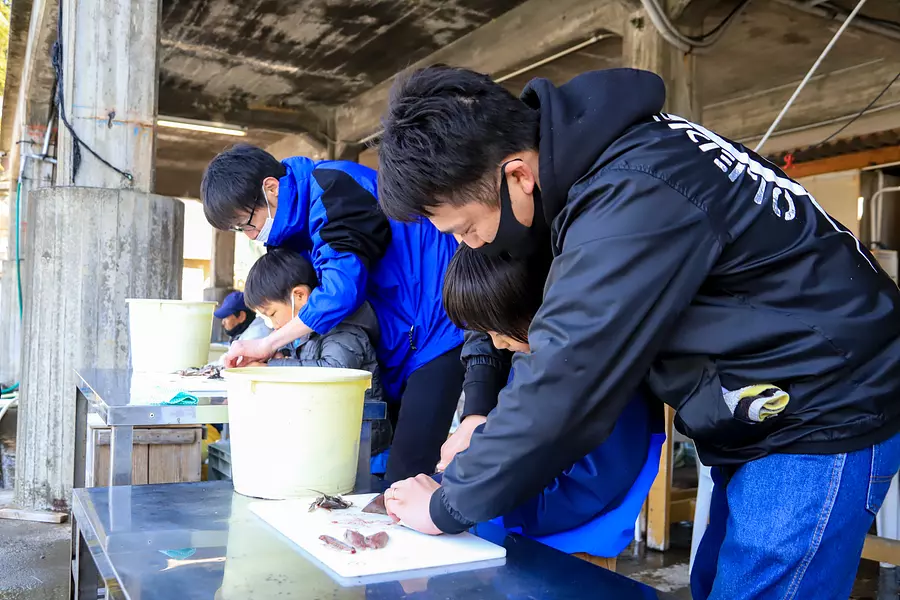
Parents and children work hand in hand as they carefully handle each fish one by one.
The fisherman says that if you handle the fish well, you'll have a lot of fish, but if you handle the fish poorly, you'll have less.
Dad's skill level increases with the number of horse mackerel he handles. The father was more fascinated than the children.
- “You can handle it forever.”
My father was full of reassurance and told me to leave it to him to handle the fish at home from now on.
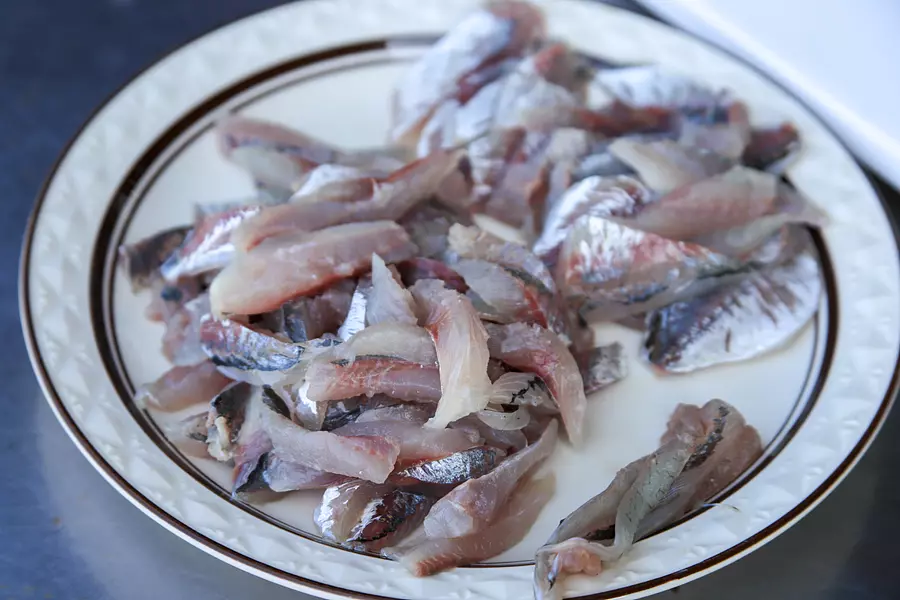
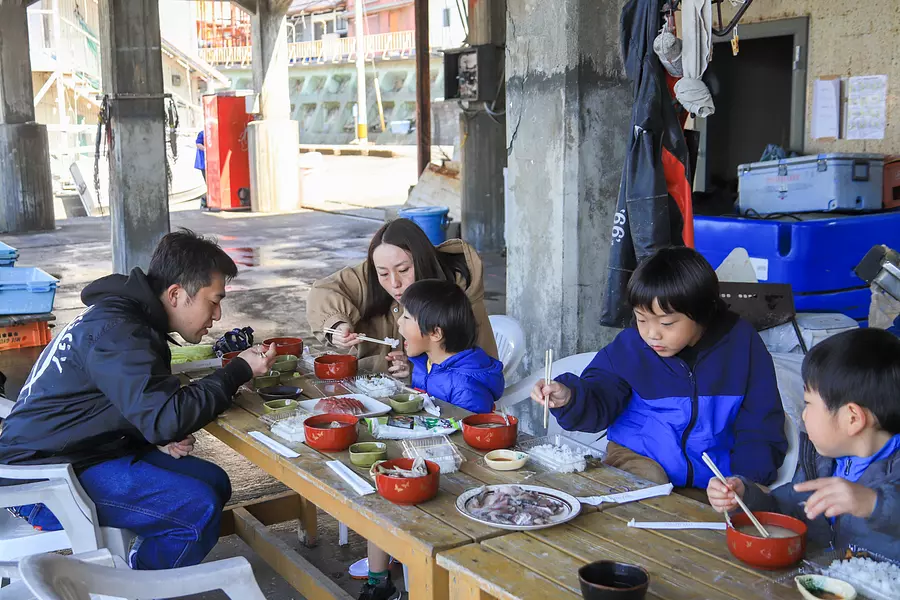
Finally, the ``Kumano Sea Tourist Fixed Net Fishing Monitoring (tentative title)'' concludes with the long-awaited ``Fisherman's Breakfast'' at the fishing port.
In addition to the sashimi of horse mackerel and horse mackerel, we have also completed the fisherman's meal ``fish soup'' that we eat all year round!
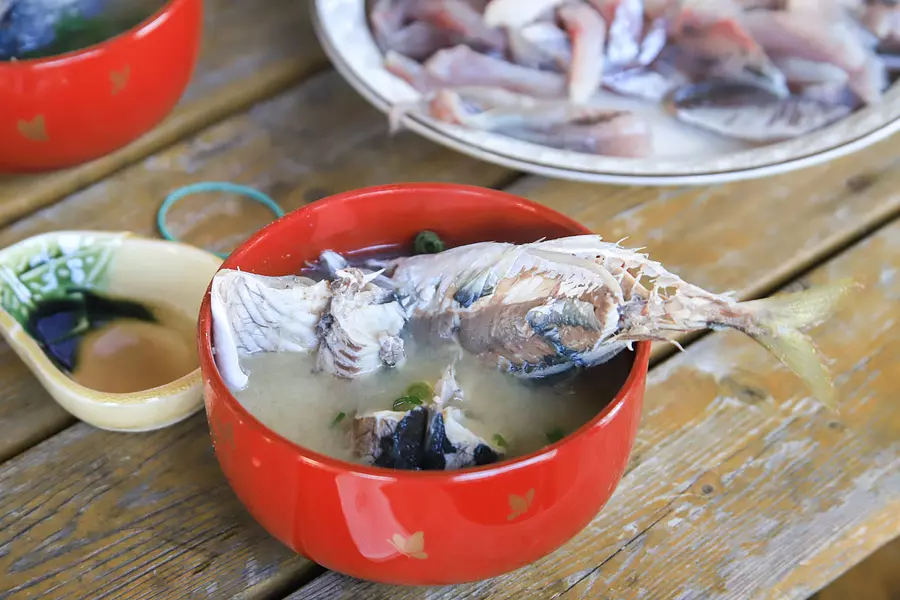
Both adults and children will be surprised as it contains a whole fish. Horse mackerel, yellowtail, horse mackerel, mackerel, black horse mackerel, etc.
The fish content changes depending on the season, but the key to making a delicious fish soup is to always include ``slightly fatty fish.''
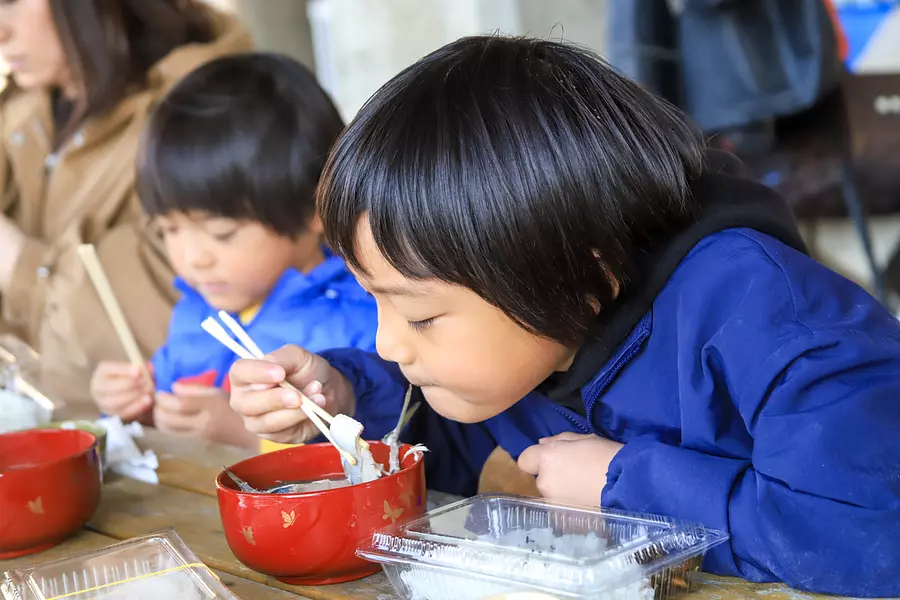
"At the gills"
“Where did you cut it first?”
"that's right."
Hungry children gobble up the fish, looking delicious.
Enjoy cooking the fresh fish you caught just a few hours ago using set net fishing. The mother said that it was a valuable experience for both the children and us.
It's not hard to imagine that the next time you eat fish at home after completing the ``Kumano Sea Tourist Fixed Net Fishing Monitoring (tentative)'' you will be reminded of the Kumano sea and the fishermen.
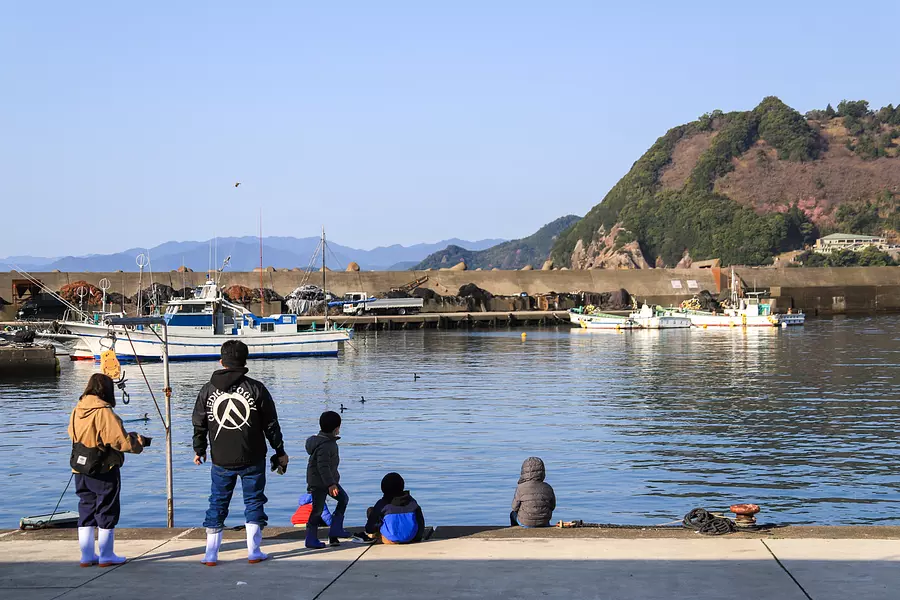
By the time we finished eating the "fisherman's breakfast," it was already past 10 o'clock. Let's go on a Kumano tour for some exercise after dinner.
The area around Isozaki Fishing Port is full of recommended spots that represent Kumano.
You can experience the great nature of Kumano with your whole body, which is completely different from being on the sea.
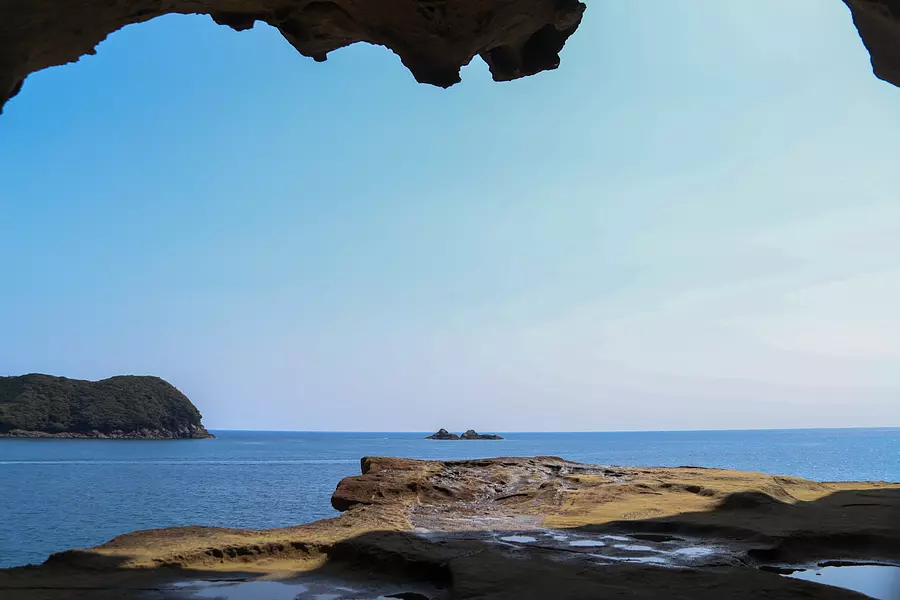
Part of the World Heritage Site ``Sacred Sites and Pilgrimage Routes in the Kii Mountain Range'', the large tuff cliffs carved by the rough waves are spectacular, and it is a 6-minute drive from Isozaki Fishing Port. Mamigashima and the fixed nets we visited can be seen with the naked eye from Onigajo.
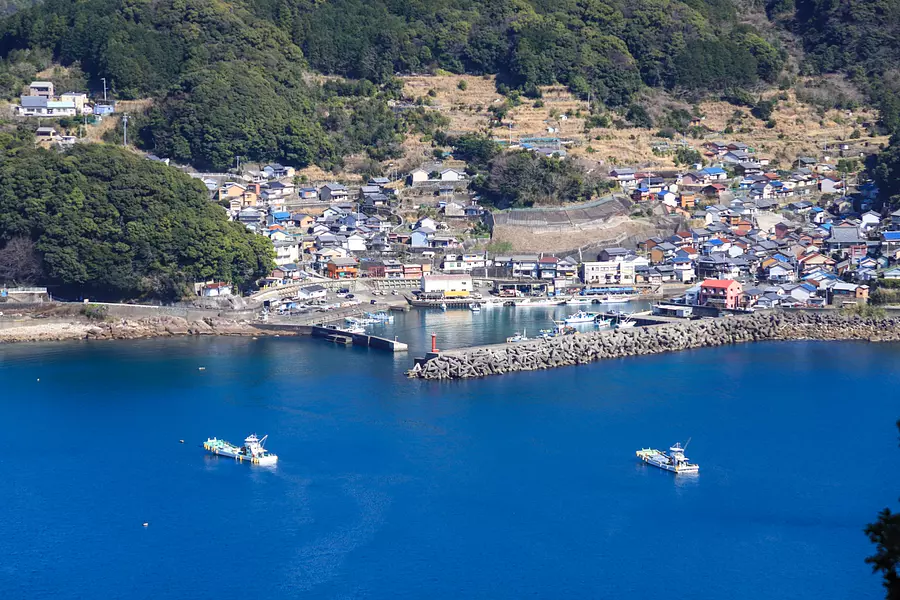
On the opposite side from where you can see Isozaki Fishing Port, you can see Shichirimihama Beach, Japan's longest gravel beach with a total length of approximately 22 km. You can also access the Kumano Kodo Matsumoto Pass, a world heritage site with beautiful cobblestone pavement, in about 15 minutes on foot from Oni no Miharashidai.
Onigajo
Address: KumanoCity, 519-4323
Phone number: 0597-89-4111 (KumanoCity Tourism and Sports Exchange Division)
Official URL: http://onigajyo.jp/
Business hours: 9:00-17:00 (Onigajo Center)
Closed: Open all year round (Onigajo Center)
Access by public transportation: About 5 minutes by bus bound for Omata Okubo from KumanoCity Station on the JR Kisei Main Line, get off at Onigajo Higashiguchi.
Access by car: Approximately 1 minute drive south from Kumano Odomari IC on the Kumano Owase Road
Parking: Available 72 spaces, 10 large buses, 18 large buses (Onigajo Center 2nd parking lot)
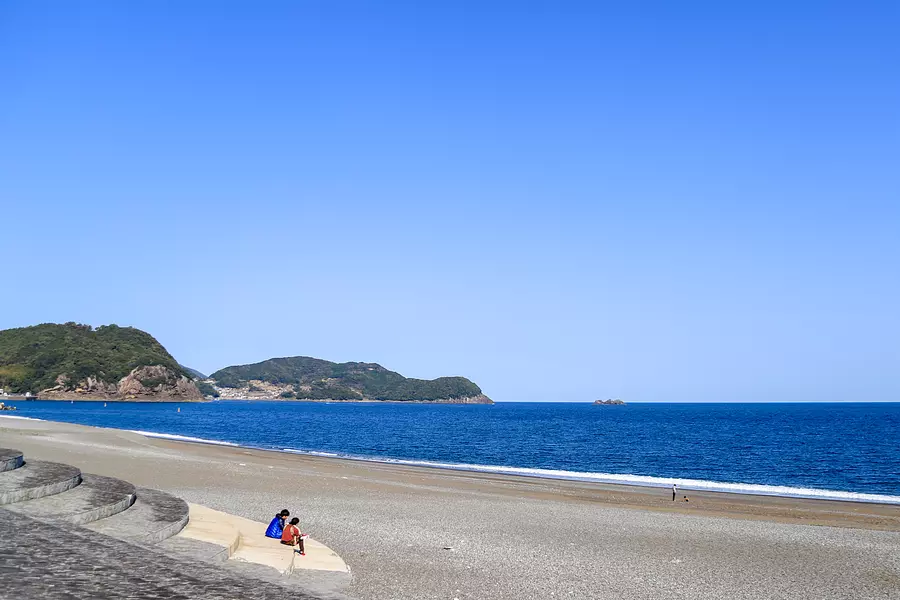
The sound of waves splashing and the rustling of round stones sounds soothing, and the sight of the coastline and horizon stretching into the distance is sure to take your breath away.
<Around Shichirimihama Shishiiwa >
Address: KumanoCity, 519-4324
Phone number: 0597-89-4111 (KumanoCity Tourism and Sports Exchange Division)
Official URL: http://kumano-kankou.com/?p=20
Closed: Open all year round
Price: Free
Access by public transportation: Approximately 10 minutes on foot from JR Kisei Main Line "KumanoCity Station"
Access by car: From Kumano Owase Road Kumano Odomari IC, along National Route 42 Shichirimihama, drive towards Shingu for about 3 minutes.
Parking: Yes
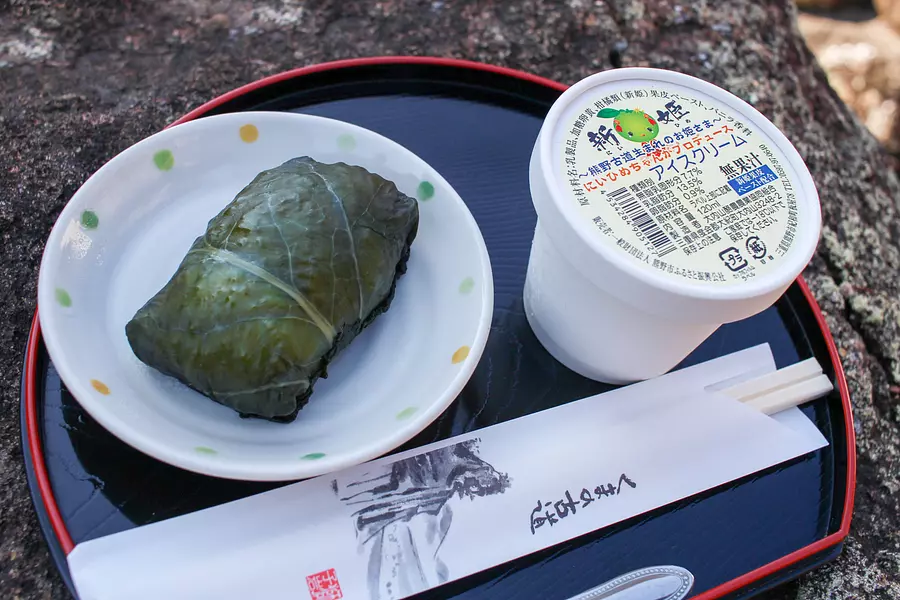
Kumano Kodo Omotenashikan is a renovated 130-year-old folk house that has been designated as a registered tangible cultural property of the country, and is a place to take a break. We also have takeout sales and Kumano souvenirs, so please feel free to stop by.
<Around Shichirimihama Shishiiwa >
Address: 204 KumanoCity (Honmachi Street)
Phone number: 0597-70-1231
Official URL: http://kumano-kankou.com/
Business hours: 9:30-16:30
Closed: Mondays and New Year holidays (12/30-1/3)
Access by public transportation: Approximately 10 minutes walk from JR KumanoCity Station
Access by car: Approximately 5 minutes by car from Kumano Owase Road Kumano Odomari IC
Kumano tour starts from the sea, woven by nature
The "Owase Kita IC - Owase Minami IC" section is scheduled to open around the summer of 2021, making access even better and making it even easier to go to Kumano. Why not go to Kumano on your holiday and experience the mysteries of nature?
Preparations are currently underway for the Kumano Sea Tourist Fixed Net Fishing Monitoring (tentative). We will notify you once we are ready to start providing the service, so please look forward to it.
| season | |
|---|---|
| area |
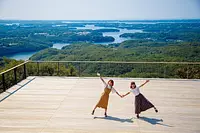
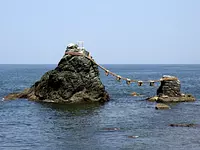
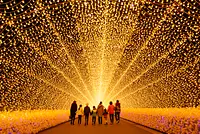

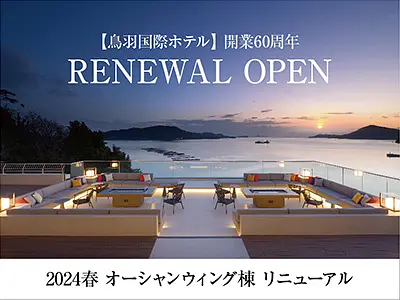
.jpg)
